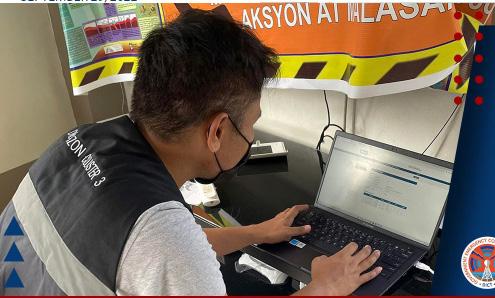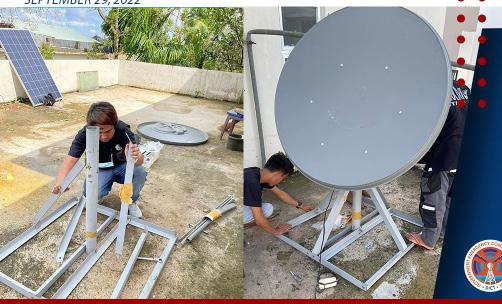
1 minute read
SUPER TYPHOON KARDING OPERATIONS: GETT in Motion
- Jose Carmelo B. Cueto
The Philippines is a country that is prone to different natural disasters and calamities, including typhoons, earthquakes, and volcanic eruptions. It is when a disaster strikes that the ability to communicate becomes very critical for effective response operations. Last September 2022, the super typhoon Karding hardly hit the Quezon province. In response to the community’s need for communication, the KonekTawag Center was put up in one of the heavily devastated area in the province, Municipality of Panukulan.
Advertisement

The KonekTawag Center has served the community several weeks after the disruption caused by the typhoon. Through the help of different national government agencies and local government units, the Emergency Telecommunications Cluster’s (ETC’s) Government Emergency Telecommunications Team (GETT) was able to successfully put up KonekTawag Center which holds the operations of the installed Very Small Aperture Terminal (VSAT) equipment, LTE Routers and MIMO Antenna, as well as the charging station which are offered free of charge to the affected community.
In the aftermath of super typhoon Karding, the telecommunications infrastructure in Quezon province was severely damaged, particularly in Panukulan, which left many communities deprived of access to critical communication services. The installation of VSATs was an important part of the emergency response to provide connectivity to the affected areas and an imperative part of the ETC’s response.

VSAT is a satellite-based communications technology that can be used to provide voice and data connectivity in remote, geographically-isolated and disaster-affected areas. It is particularly useful in situations where traditional communication infrastructure has been damaged or destroyed, as it can be quickly deployed and does not require a physical connection to a terrestrial network. In addition to providing connectivity, the VSATs can also be used to gather and transmit data from the affected areas. This data can be used to monitor the situation on the ground, assess the needs of the affected communities, and plan the response efforts.
Furthermore, the installation of KonekTawag Center as part of the ETC response is a critical component of the response operations to a disaster like super typhoon Karding in Quezon province, Philippines. It has connected the community back to the world and has revived back people’s needs for recent information. The provision of a reliable and flexible communication infrastructure that can be quickly deployed and used to support emergency response operations has made community’s distress subside back to a minimum. And by providing connectivity to gather data from the affected areas and supporting the community both mentally and physically, the ETC’s responders can help ensure an effective and coordinated response to the disaster.








